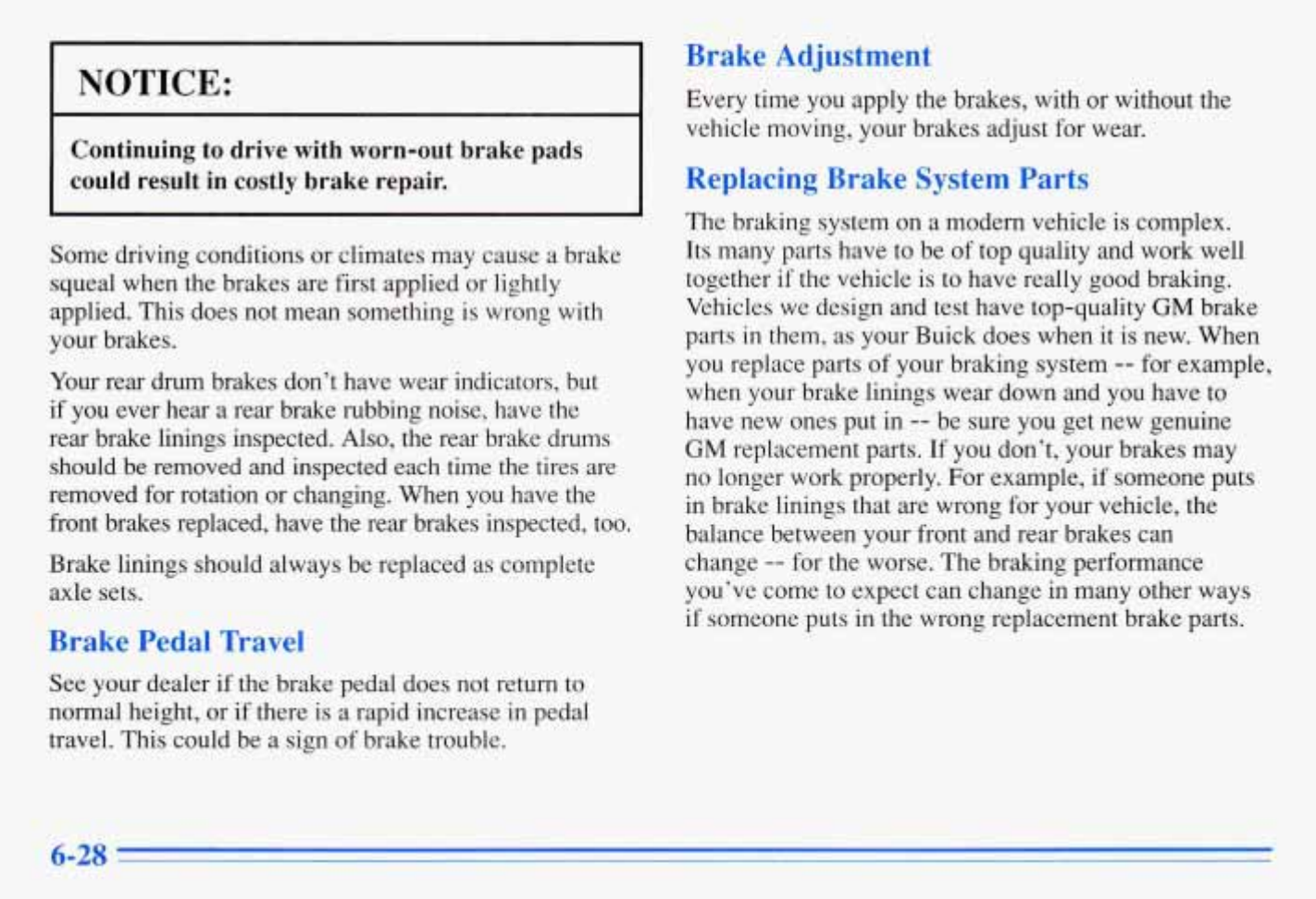
Brake
Adjustment
I
NOTICE:
I
Continuing to drive with worn-out brake pads
could result in costly brake repair.
Some driving conditions or climates may cause a brake
squeal when the brakes are first applied or lightly
applied. This does not mean something is wrong with
your brakes.
Your rear drum brakes don’t have wear indicators, but
if you ever hear a rear brake rubbing noise, have the
rear brake linings inspected. Also, the rear brake drums
should be removed and inspected each time the tires are
removed for rotation or changing. When you have the
front brakes replaced, have the rear brakes inspected, too.
Brake linings should always be replaced as complete
axle sets.
Brake Pedal Travel
See your dealer
if
the brake pedal does not return to
normal height, or
if
there is a rapid increase in pedal
travel. This could be a sign of brake trouble.
Every time you apply the brakes, with or without the
vehicle moving, your brakes adjust for wear.
Replacing Brake System Parts
The braking system on a modern vehicle is complex.
Its many parts have
to
be of top quality and work well
together
if
the vehicle
is
to have really good braking.
Vehicles we design and test have top-quality
GM
brake
parts in them, as your Buick does when
it
is new. When
you replace parts of your braking system
--
for example,
when your brake linings wear down and
you
have to
have new ones put in
--
be sure you get new genuine
GM
replacement parts.
If
you don’t, your brakes may
no longer work properly.
For
example, if someone puts
in brake linings that are wrong for your vehicle, the
balance between your front and rear brakes can
change
--
for the worse. The braking performance
you’ve come
to
expect can change in many other ways
if someone puts in the wrong replacement brake parts.
6-28


















